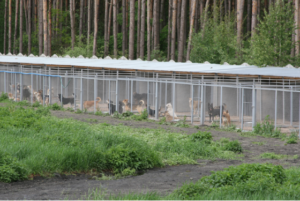Process to Adopt Animal

For an animal lover, bringing a furry friend home is not just a point of pride. You have extended a loving home to a needy pet. It serves a beautiful purpose in your life as the perfect companion and friend. Adopting one animal at a time from shelters and rescues rather than buying from breeders or a pet store helps stop the birth of unwanted puppies and kittens that take up resources and eventually end up in shelters themselves. This blog offers a step-by-step process for adopt animal so you can be ready to bring home a new family member.
Preparing for Adoption
1. Assessing Readiness
To help you decide if you can add a pet to your family life, consider
- your current lifestyle,
- available time, and
- financial capacity.
Then, consider which pet might be best for you, your family, and your home. Dogs need different things than cats or smaller pets, each with associated costs. Do your research to determine which pet is the best fit for your family.

2. Financial Preparedness
Getting a pet costs money at the very start and will continue to incur further costs. The one-off expenses cover the fees involved with adopting a pet, as well as costs for supplies such as food, bedding, and toys. Going forward, it will add veterinary bills, food, grooming, and pet insurance to these figures. You will need a budget to afford all these, ideally with a little left over at the end of each month.
3. Home Preparation
Plan by
- pet-proofing your home,
- removing any hazards, and
- setting up a safe and inviting area for them to come into.
Buy food and water dishes, bedding, toys, and other supplies so your new companion immediately feels at home.
Finding the Right Animal

1. Researching Adoption Options
Begin by looking at animal shelters and rescue organizations in your locale. Some shelters take in cats and dogs, and they also have specific rescue organizations for single-breed dogs. You can also find pet owners looking to give away, sell, or rehome pets on websites such as Petfinder and Adopt-a-Pet.

2. Visiting Shelters and Rescues
Go to the shelters and rescues and meet your future pet. In addition to spending time with him, tour the shelter and note
- how the animals are treated?
- Is there proper care and cleaning of the kennels?
- What is the ‘attitude’ of the staff, and what is their passion for the animals in their care?
Feel the animals and spend time with them before deciding. You can live with these animals, so you must find one you like and one that suits your lifestyle.

3. Understanding the Animal’s Background
Review the animal’s past, such as
- vaccination,
- spay/neuter,
- medical history,
- physical and behavioural descriptions.
These help you prepare for any issues and provide your pet with the best care possible in a new environment after rescue or adoption.

The Adoption Process
1. Application Process
Fill out the adoption application, which will likely ask for information about you, your household, and your pet care experience. Be ready to provide references to personable cherished friends, and be prepared to have background checks or home visits performed by the organization if their adoption process includes them.
2. Meeting Adoption Requirements
Make sure you are of legal age and a permanent resident of the area. If you are a renter, obtain a written letter from your landlord approving you (and any other family members) having a pet. Consider what a suitable living environment would look like for the adopted cat or dog. Remember that animals rely on us to take care of them.
3. Adoption Fees and Contracts
Look over the adoption fees, which often cover veterinarian care, microchipping, and other tools. By signing an adoption contract, you become responsible for the pet and acknowledge the stipulations of the adoption.

Bringing Your New Pet Home
Transition Period
Slowly bring your new cat into the home and seal it off in a small, secure area to help it acclimatise. If you have other pets, introduce them too, adding them to the new space slowly and carefully so that they get a chance to bond.
Initial Veterinary Visit

You should arrange a health check with a vet either at the time of purchase or within a week of bringing your new companion home. Your vet should confirm your new pet’s vaccine status, and you should talk to them about preventative care and developing a health plan.
Building a Routine
If you maintain a set feeding and exercise schedule, your pet will quickly adjust to its new home. Give your pet measured meals simultaneously daily, keep a routine for walks or interactions, and ensure your pet gets enough exercise. Start teaching the basics of obedience and use positive reinforcements, such as treats, to reward good behavior.
Enrol our Pet First Aid Fundamentals course on Jobsland.
Post-Adoption Support
Accessing Resources and Support
Keep in touch with the adoption organization for post-adoption checks and other services. Take advantage of the training and behaviour advice they offer. Join an online group or website forum for other pet owners to exchange experiences and tips.
Continued Education and Training
Take your pet for obedience and behavioral training classes. More advanced training might be needed for certain needs. Keep yourself constantly updated on animal care information through books, articles, workshops, and seminars to ensure your pet gets the best care possible.
Conclusion

Bringing a new pet into your home is a wonderful emotional and financial commitment. This step-by-step guide will streamline the process and give a new and loving home to a needy animal. Consider embracing the joys and benefits of animal adoption and experiencing all the happiness it can bring to everyone involved.
